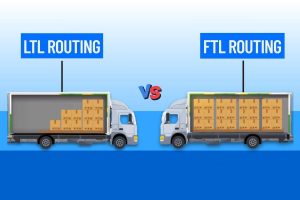Integration services are a wide term with extensive meaning and application in the tech industry. They have multiple benefits and features depending upon the business needs and goals. The meaning of integration services is reflected in the name itself. These are connecting or linking services essentially. They include comprehensive design and implementation services or solutions. These services possess the capability of connecting application functionality and operability and/or data to each other and, in some instances, with an established or sometimes planned IT infrastructure. Some examples of these linking activities include project planning and management, design and implementation of software programming interfaces, online web services, and sometimes middleware systems.
Xavor has helped hundreds of customers around the globe to address their data integration needs between enterprise systems, custom solutions, and business processes integration.
Xavor has its own proprietary tool integration called xEngine, which industry leaders have used for system integration. It also holds deep expertise in integration using MuleSoft, BizTalk, Scribe, and Azure integration services.
Let’s now review the important uses of integration services.
-
Data import and export wizard (transfer tool)
It is an important use of integration services, and it also constitutes a feature. The data transfer tool or export and import feature is really helpful for businesses because it serves all business and functional needs. It makes the transfer of data from one source to another very convenient. For example, developers and engineers can use it to move data from a flat file to another file, table, or destination. It is one of the earliest use and feature of integration service in the SQL server 7.0 time period. To date, it is the most important use and utility of integration service in the database admin (DBA) toolbox.
-
Extract, transform, and load (ETL) tool
One of the main utilities and features of integration services include the ETL tool. It does exactly what it implies and is used for the same purpose. The tool is self-explanatory of the process that goes inside the data warehousing environment. ETL is used for:
- Extracting data or content from a platform or source transaction system
- Transforming, cleaning and deduplicating the data
- Conforming the information and content
- Loading the data into multiple cubes or sections or analysis destinations
Before integration services, another tool known as data transformation services or DTS was used for doing the ETL tasks. It was then replaced by modern integration services because enterprise-level ETL services are available only in SQL servers now.
-
Control Flow Engine
Processing data does not just involve transferring data from one location to another. Neither it involves transforming the data while migrating it. In the bigger picture, there are numerous processes that are going on inside the data warehouse. Integration services have a control flow engine feature and use as well, which engineers use for carrying out their workflow for the following tasks:
- Downloading files
- Renaming them
- Dropping and designing new tables
- Rebuilding indexes
- Carrying out backups and recoveries
Thus, integration services perform work for actual processing that takes place during data flow. In addition to this, integration services are also used for offering a full-fledged control flow for sustaining and managing these tasks and activities.
-
Application Platform
Until now, we only heard about the models PaaS, SaaS, IaaS, etc. Integration services introduced business to a new model where integration services as a platform model is used. Developers are keenly interested in this model and create applications for integration services as a platform. They embed the engines within the software with the help of given object models to create this new infrastructure. Many businesses use this approach or model by embedding integration services engines and components within the application platform. They then use object models to create a new model which fulfills the application needs of an organization.
-
Data Transformation Pipeline
Data transformation pipelines are performance-driven primarily and operate under two fundamental principles – high performance and quality and data pipelining. The data flow task feature or use is a performance-driven tool. Businesses deploy it to perform high-level and complex data transformations for huge databases. These datasets undergo performant processing to produce corporate-level results. Whereas the data pipelining concept originates from data processing of heterogenous and multiple data sources. The pipelining occurs through different parallel sequential transformations and leads to heterogenous data locations (destinations). Together these principles allow the smooth processing of data. The data flow task tool also makes it possible to process data that exists or is available in multiple formats and on different media in a particular sandbox location.
Now you have an idea of how to use integration services. You can use one or all of the above mentioned features for your applications and enjoy numerous benefits for your applications.
Evolution in the digital technology landscape has caused massive disruption across multiple industries and optimized efficiencies, speeding up information sharing and dynamizing business processes.
To become a leader in their respective enterprise domain, enterprises are taking positions on strategic disruptive technologies like highly-scalable micro-services, hyper-automation using AI ML solutions, IoT; Digital Twin, rapid integration, and cloud computing.
But the challenge is shifting the focus from core business to ever-evolving technology, which has many different elements, and where each has its own complexities. We provide the tools and support needed to achieve this.
Guiding you throughout the transformation journey, we start with a technology and ecosystem strategy that lays a future-ready foundation. We then develop a roadmap for change that integrates with your workforce and business processes—all in a highly secure environment.












